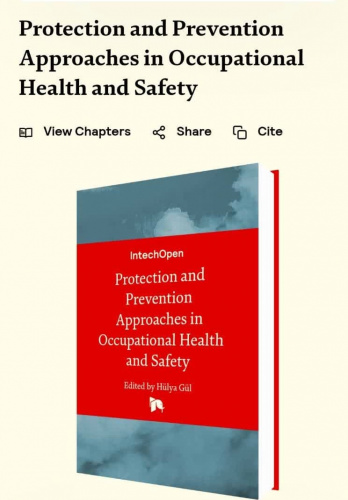Publication of “Protective and Preventive Approaches in Occupational Health and Safety” Announced

The book “Protective and Preventive Approaches in Occupational Health and Safety” serves as a comprehensive scientific and practical resource, exploring modern and evidence-based methods for occupational risk management, accident prevention, and workplace health promotion. By integrating theoretical principles with actionable solutions, this publication equips managers, safety professionals, and employees with the knowledge to foster safer, healthier, and more productive work environments.
Foundations and Conceptual Framework
The book opens with an in-depth exploration of the history and evolution of Occupational Health and Safety (OHS), clarifying essential concepts such as risk assessment, chemical and physical hazards, ergonomic risks, and international standards (e.g., ISO 45001). Advocating for a proactive, prevention-oriented approach, the author highlights the critical importance of early hazard detection and the implementation of systematic control measures as the foundation of effective safety strategies.
Protective and Preventive Strategies
A defining strength of this book is its in-depth examination of practical tools and techniques for effective risk mitigation. Dedicated chapters—including "Designing Safe Work Processes," "Effective Use of Personal Protective Equipment (PPE)," and "Employee Training Methodologies"—leverage real-world case studies across diverse sectors (from construction to healthcare) to illustrate proven strategies for embedding a robust safety culture within organizations.
Furthermore, the work critically evaluates the transformative potential of cutting-edge technologies, such as:
- IoT (Internet of Things) for real-time hazard monitoring
- AI-driven analytics for predictive accident modeling
These forward-looking analyses position the book as an essential resource for organizations aiming to future-proof their occupational health and safety systems.
Mental Health and Human Dimensions
Moving beyond traditional physical hazards, the book provides a rigorous examination of psychosocial workplace challenges—including chronic stress, occupational burnout, and work-life imbalance—while underscoring the critical need for structured mental health initiatives and comprehensive employee support systems.
Presents evidence-based findings demonstrating the direct link between employee psychological well-being and organizational performance
Advocates for innovative organizational strategies, such as:
- Participatory management approaches
- Cultivation of open-dialogue cultures
- Bridges the gap between workplace mental health theory and practical implementation
Adaptability and Global Challenges
Recognizing the diverse realities of global workplaces, the book provides targeted analysis of critical context-specific challenges:
- Safety in informal labor sectors (often overlooked in conventional OHS frameworks)
- Unique obstacles faced by developing economies in implementing safety standards
- Growing threats posed by climate change to worker health and productivity
By addressing these pressing yet frequently neglected issues, the book positions itself as an indispensable resource for:
✓ Policymakers drafting inclusive labor regulations
✓ Labor rights advocates promoting equitable workplace protections
✓ International organizations developing globally relevant safety initiatives
Conclusion
Protective and Preventive Approaches in Occupational Health and Safety" transcends the boundaries of a traditional technical manual, emerging as a principled manifesto for the universal right to safe, dignified work environments.
Chapter by Dr. Mohammad Bagher Hassanvand
Dr. Mohammad Bagher Hassanvand’s contributed chapter explores the critical intersection of preventive occupational health and psychological practice, with particular emphasis on the unique challenges faced by professionals working with exceptional children.


